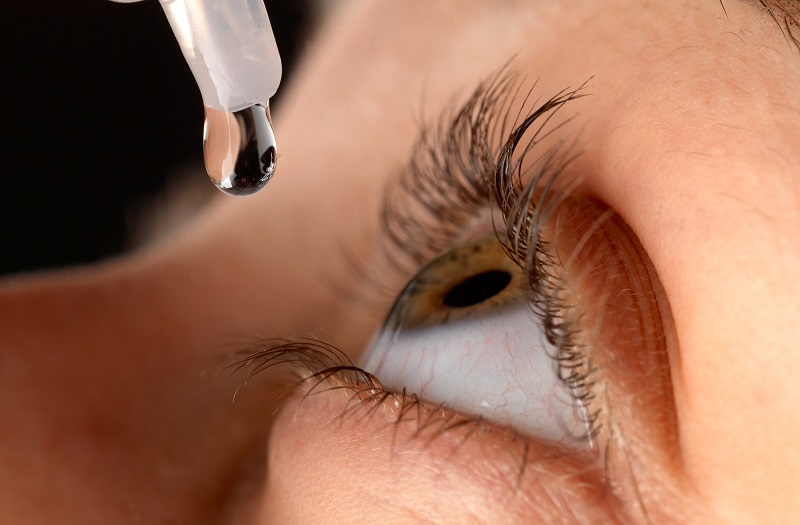No products in the cart.

الدموع الاصطناعية هي قطرات للعين متاحة بدون وصفة طبية تُستخدم لتخفيف الانزعاج الناتج عن جفاف العين. يمكن أن يحدث الجفاف عندما لا تُنتج عيناك كمية كافية من الدموع ذات الجودة المناسبة، وغالبًا ما يكون ذلك بسبب التقدم في العمر، أو العوامل البيئية، أو الاستخدام المطوّل للشاشات. تساعد هذه القطرات في دعم طبقة الدموع الطبيعية من خلال توفير الترطيب اللازم والراحة المهدئة. وتتوفر الدموع الاصطناعية بصيغ طبية أو بدون وصفة طبية، ويمكن استخدامها بأمان لدعم ترطيب العين وراحتها.
لمزيد من المعلومات حول تاريخنا ومهمتنا في الابتكار الصيدلاني، يمكنك زيارة صفحة من نحن.
الدموع الاصطناعية هي قطرات الدموع الاصطناعية تُستخدم لتخفيف الجفاف والتهيّج في العين. تقوم هذه القطرات بمحاكاة الدموع الطبيعية، وتُوفّر الرطوبة والتشحيم للعينين عندما لا تستطيع إنتاج ما يكفي من الدموع بنفسها. ومن أبرز أسباب جفاف العين: التقدم في السن، الظروف البيئية، قضاء وقت طويل أمام الشاشات، أو استخدام بعض الأدوية. سواء كانت على شكل جل، مرهم، أو سائل، تساعد قطرات مرطبة للعين في استعادة الراحة وحماية سطح العين.
تشمل أعراض جفاف العين الشائعة: الحرقان، الاحمرار، تشوّش الرؤية، والشعور بجسم غريب في العين، ما يؤثر على راحتك اليومية ورؤيتك. تعمل قطرات مرطبه لجفاف العين على دعم إنتاج الدموع وحماية سطح العين. وعلى الرغم من أنها ليست علاجًا نهائيًا، إلا أنها ضرورية للتحكم في أعراض الجفاف المؤقتة أو المزمنة.
تحتوي بعض قطرات الدموع الاصطناعية على مكونات إضافية مثل مواد التزليق، أو مضادات الشعور باللسع، أو مواد حافظة لزيادة الفعالية. ومع ذلك، يجب الانتباه إلى بعض الآثار الجانبية المحتملة مثل الشعور بالوخز أو تشوّش الرؤية فور الاستخدام، خاصة مع القطرات التي تحتوي على مواد حافظة.
يوجد العديد من أنواع الدموع الاصطناعية التي تلبي احتياجات وتفضيلات مختلفة. إليك نظرة أقرب على الأنواع الثلاثة الأكثر شيوعًا:
يُقدّم هذا النوع ترطيبًا كثيفًا وطويل الأمد، مما يجعله مثاليًا للاستخدام الليلي. يشكّل حاجزًا وقائيًا على سطح العين لمنع فقدان الرطوبة. لكنه قد يسبب تشوّشًا مؤقتًا في الرؤية. يتوفر بنسخ تحتوي على مواد حافظة وأخرى خالية منها، وغالبًا ما يُفضل من قبل من يعانون من جفاف شديد في العين.
يوفر توازنًا بين القطرات السائلة والمراهم. فهو أكثر سماكة من القطرات العادية لكنه أخف من المرهم، ويُوفّر ترطيبًا مستمرًا دون تشويش مفرط على الرؤية. معظم أنواع الجل خالية من المواد الحافظة ومن المواد القابضة، مما يجعلها مناسبة للعيون الحساسة.
هي قطرات خفيفة تعتمد على الماء وتشبه الدموع الطبيعية. وهي خالية من المواد الحافظة، وغالبًا ما تأتي في عبوات أحادية الاستخدام لتقليل خطر التلوث. تُناسب الحالات الخفيفة من جفاف العين، ولا تؤثر عادة على الرؤية أو تسبب تهيجًا.
اختيار أفضل قطرات مرطبه لجفاف العين يتطلب أحيانًا التجربة. يعتمد الاختيار على شدة الأعراض، مدى حساسية العين، وما إذا كنت ترتدي عدسات لاصقة. القطرات التي تحتوي على مواد حافظة مناسبة للاستخدام اليومي وتتوفر في عبوات متعددة الجرعات، لكن الأنواع الخالية من المواد الحافظة ألطف على العيون الحساسة.
إذا كنت حساسًا لمكونات مثل البورات، الكربوكسي ميثيل سليلوز، أو الهيالورونات، فقد تشعر بانزعاج أو رؤية غير واضحة. كن حذرًا أيضًا إذا كنت تستخدم القطرات أثناء ارتداء العدسات، لأن العديد من قطرات الدموع الاصطناعية لا تُناسب الاستخدام مع العدسات.
انتبه أيضًا لمحتوى الصوديوم؛ فالقطرات التي تحتوي على نسبة عالية منه قد تُسبب لسعًا عند استخدامه على عيون ملتهبة. إذا استمرت الأعراض، استشر طبيب العيون للتأكد من أنك تستخدم النوع والصيغة المناسبين لحالتك.
لمعرفة المزيد عن نهجنا الشامل في العناية بصحة العين، يُرجى زيارة اوركيديا فارما
